
Volume 48 - Autumn 2019
Riebau's Apprentice
The Early Life of Michael Faraday - by Anne Roberts
This article first appeared in the 2018 edition of the Society of Bookbinders Journal 'Bookbinder' and appears here with the kind permission of its author Anne Roberts and the Society of Bookbinders.
Introduction
One evening in the mid-1850s, the distinguished man of science Michael Faraday, and his friend and colleague John Tyndall, had an engagement in Baker Street. They were about to leave the Royal Institution in Albemarle Street when Faraday took his friend's arm, saying, 'Come Tyndall, I will show you something that will interest you.' The two made their way northwards, crossed Oxford Street, and a few minutes later arrived at Blandford Street, just off Manchester Square. There, Faraday took Tyndall into a stationer's shop and, peering into a small room to the left of the entrance, exclaimed, 'Look there, Tyndall, that was my working-place. I bound books in that little nook!'1
Errand Boy and Apprentice
George Riebau, who was to become Michael Faraday's master, was first listed in the London trades directories in the 1780s. Very little is known about his background or when he, or his family, settled in London. At first his stationer's and bookseller's business was located in the Strand, but in the early years of the nineteenth century he moved to Blandford Street [fig 1]. As well as selling books, Riebau offered the service of binding them to his customers' requirements. His business also covered the publishing of books and pamphlets, and the sale and loan of newspapers.
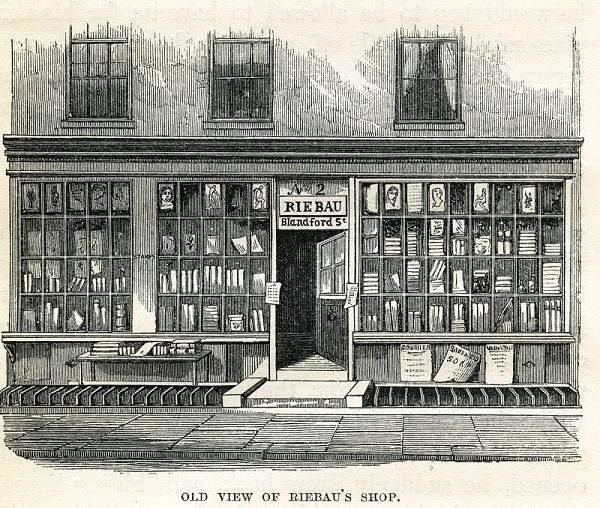
fig 1
A couple of minutes' walk from Riebau's shop, in rooms in Jacob's Well Mews, James Faraday, a blacksmith, lived with his wife Margaret and their four children, the third of which was Michael. There was little money to spare and none of the children had more than a basic education. James Faraday belonged to the Sandemanians, a small nonconformist sect which had its origins in Scotland. Several members of this group were skilled tradesmen, including bookbinders, and it may have been through a Sandemanian contact that, in September 1804, Riebau employed the fourteen-year-old Michael as a newspaper and general errand boy. It was Faraday's job to deliver newspapers on loan in the morning, collect them towards the middle of the day, and re-deliver them to other customers who were content to read the news later and at a cheaper rate.
Faraday did his job well and, a little over a year later, in October 1805, Riebau took him on as an apprentice to learn 'The Art of Bookbinding Stationary [sic] and Bookselling'. Unusually, Riebau did not charge a premium 'in consideration of [Faraday's] faithful service' as an errand boy.2 Although he lived very nearby, Faraday, as an indentured apprentice, was given bed and board in Riebau's house, as was customary at the time.
Riebau was not a Sandemanian, but he held nonconformist views and was a supporter of the Millenarian movement, which believed that the Second Coming of Christ was imminent. He published the writings of Richard Brothers, a prominent Millenarian, even after Brothers had been committed to a lunatic asylum. Whatever Faraday thought of the Millenarians, he found the Riebau household, and the trade he was learning, congenial. In a letter to a relative written in 1809, four years into Michael's apprenticeship, James Faraday wrote that his son
[is] a bookbinder and stationer, and is very active at learning his business.... He has a very good master and mistress, and likes his place well. He had a hard time for some while at first going; but, as the old saying goes, he has rather got the head above water, as there are two boys under him.
The main part of Faraday's job would have been to bind, or supervise the binding, of the books that Riebau sold. He would have been required to produce, and oversee, good-quality 'bread and butter' work rather than elaborate fine bindings.
Faraday's working day would have been a long one. In the early nineteenth century, the standard hours of work for a bookbinder were from 6a.m. to 6p.m., with overtime during busy periods. Despite this, he found the time and energy after work to read some of the volumes he bound. He also learned drawing and perspective from John James Masquerier, a portrait artist of some note who had fled revolutionary Paris and taken shelter under Riebau's roof. A volume Faraday read at this time, which influenced him profoundly, was The Improvement of the Mind, a popular self-help book by the nonconformist hymn-writer Isaac Watts. This exhorted the reader, among other things, to be guided by observed facts, and to keep a commonplace book in which to record them. Accordingly, in 1809 Faraday bound a blank volume for himself and carefully lettered the title page: 'The Philosophical Miscellany. being A collection of Notices, Occurances [sic], Events &c relating to the Arts and Sciences' [figs 2 and 3]. He illustrated many of his entries with drawings and diagrams. [figs 4 and 5].
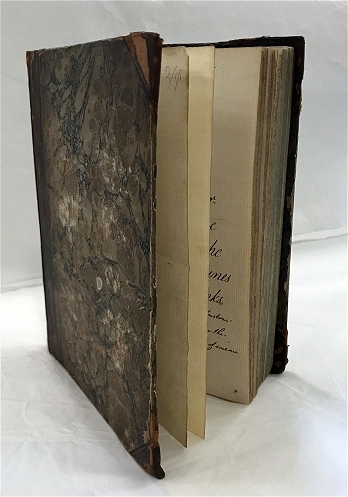
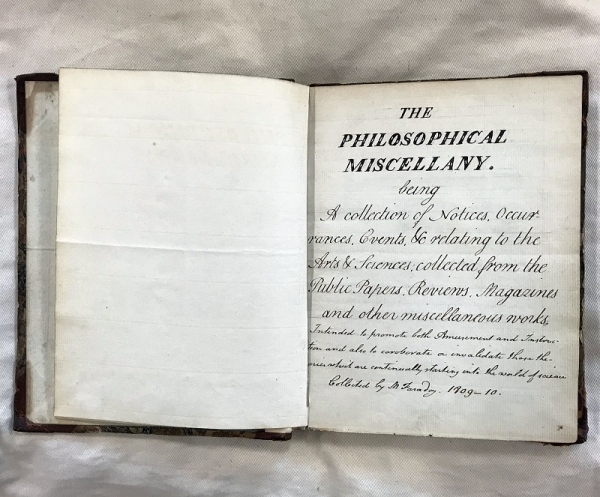
figs 2 and 3 - The Philosophical Miscellany (205 x 170 x 20mm)
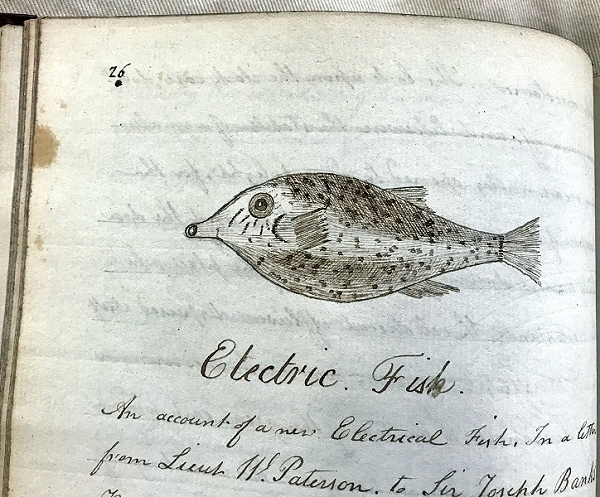
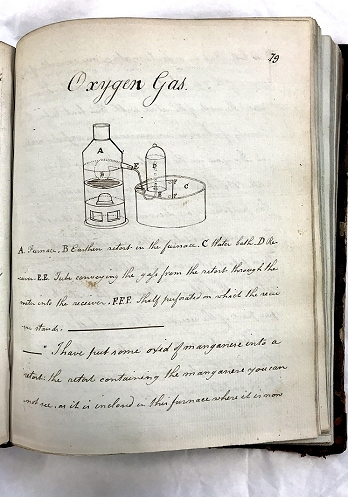
figs 4 and 5 - Illustrations in The Philosophical Miscellany
In his other reading, he was focusing on the physical sciences, for example Jane Marcet's popular and accessible book Conversations on Chemistry. This takes the form of conversations between two diligent (and, surprisingly, female) students, Caroline and Emily, and their instructress, Mrs B., on topics such as 'Light and heat', and 'The chemical agencies of electricity'. Several experiments are described and some of them illustrated. Not content with just reading, Faraday started to replicate some of the experiments in Marcet's book for himself. For example he constructed an 'electrical machine', designed to generate electricity by friction, very similar to one illustrated in Marcet [fig 6].
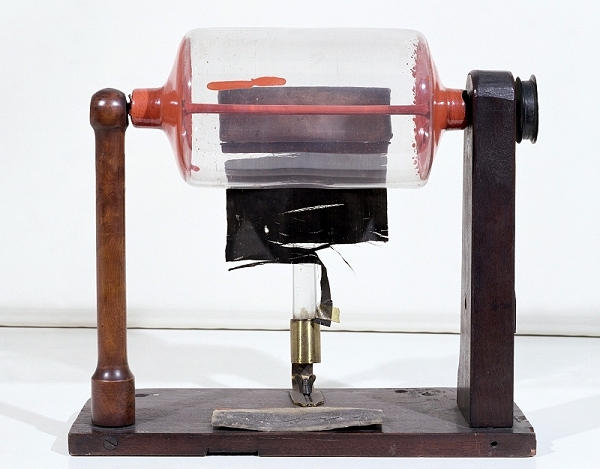
fig 6 - Faraday's 'electrical machine'
It is an attractive idea to imagine that some of the pieces of wood he used in making the frame are from discarded bookbinding equipment.3 An illustration [fig. 7], probably published at least sixty years later, after Faraday's death, shows Riebau proudly showing off the machine to a customer, with Faraday, depicted as a smartly-dressed boy prodigy, looking on. In fact, Faraday would have been about 18 when he constructed the machine, but the representation of the shop's interior is probably fairly accurate.
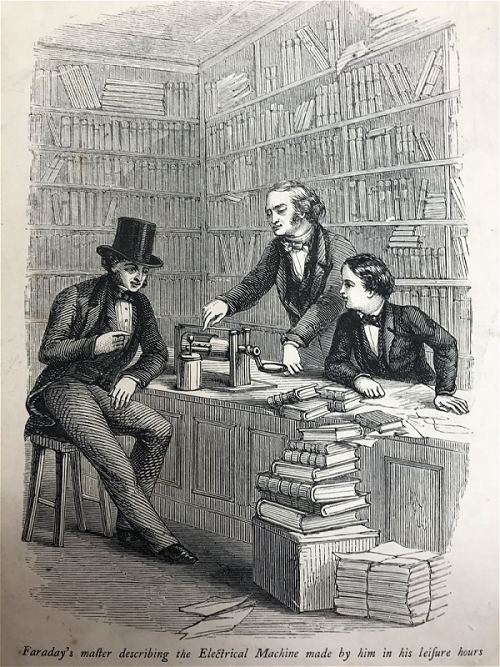
fig 7 - Faraday's master describing the Electrical Machine made by him in his leisure hours
Far from discouraging Faraday's after-hours interests, as a typical master might have done, Riebau supported them. Many years later his friend, Benjamin Abbott, vividly recalled life at Riebau's at this time:
In the shop where M.F. worked as an apprentice was a small fire place used for warming the room & heating the tools used in gilding. By the aid of some milled boards he contrived, when he wished it, to convert this into a furnace & thus to make experiments in Metallurgy; whilst on the Mantelpiece were placed sundry little voltaic piles & other matters constituting as it were a miniature laboratory. His employer took some interest in these pursuits & during the latter years of his apprenticeship allowed him the privilege of banishing a junior from the shop after the hours of work, & thus securing himself from interrogation.4
In accordance with the terms of his indentures, Faraday was not allowed to go out in the evening without Riebau's permission. This he willingly gave in 1810 when Faraday asked if he could attend a series of Monday evening scientific lectures at John Tatum's house in Dorset Street. Faraday made, and bound, notes of these. Some months later, in early 1812, Riebau showed this volume to one of his customers, William Dance. Dance was so impressed that he gave Faraday tickets for four lectures by Humphry Davy, then Professor of Chemistry at the Royal Institution. As with the lectures he had attended at Tatum's, Faraday wrote out his notes, complete with drawings and an index, and bound them in a quarto volume [figs 8 and 9].
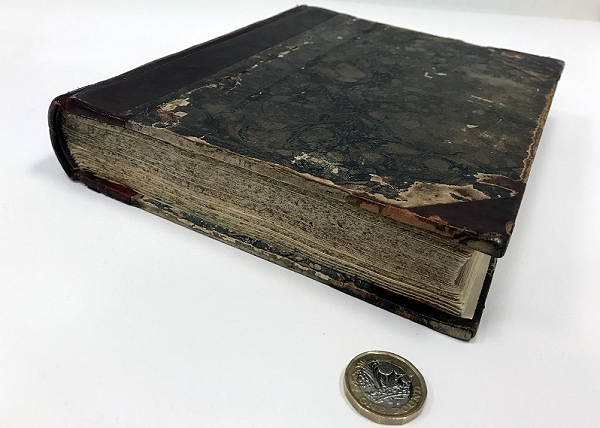
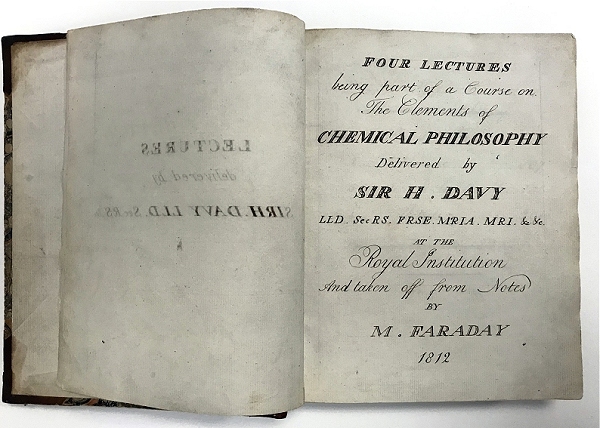
figs 8 and 9 - Faraday's notes on Davy's lectures (210 x 175 x 38mm).
Journeyman
In September 1812, now aged 21, Faraday completed his seven-year apprenticeship with Riebau. The obvious next step was to obtain a place as a journeyman, but by now he was clear in his mind that his only desire was 'to be engaged in scientific occupation, even though of the lowest kind'. Before his apprenticeship had ended, he had written to Sir Joseph Banks, President of the Royal Society, asking for a job, but was brushed aside. In October, very reluctantly, he started work as a journeyman for Henri de la Roche, a French emigrant whose bindery was in King Street, only a short distance from Riebau's. Riebau, who had probably recommended him for the place, commented that he was receiving 'a Guinea & half per week which I think very fair wages for a Young man just out of his time'. But in October Faraday wrote disconsolately to a friend, '[I] am now working at my old trade, the which I wish to leave at the first convenient opportunity.'
Despite Faraday's discontent, it appears that the quality of his work did not suffer. De la Roche, realising that his new journeyman was able and industrious, made him a generous offer: 'I have no child, and if you stay with me you shall have all I have when I am gone.' It was an offer which most young men from a humble background would have found hard to turn down, but Faraday's mind was set on other things. Having failed to gain the interest of Sir Joseph Banks at the Royal Society, Faraday now aspired to an interview with Sir Humphry Davy at the Royal Institution. Either Riebau, or William Dance, suggested that he send his bound notes of Davy's lectures to him, which Faraday did towards the end of December. Davy was impressed - it appears by both the quality of the notes and of the binding - and offered to see him in January 1813. One can only imagine Faraday's excitement at the prospect of an interview with one of the most eminent men of science in the country. But rather than offering him a job, Davy advised him to 'Attend to the book binding', promising to give him the work of the Institution, and, as a bonus, any binding work he wanted done himself. This was the last thing Faraday wanted to hear: at that point he must have felt condemned to be a bookbinder for the rest of his life.
But things were to change very quickly. In mid-February William Payne, Laboratory Assistant at the Royal Institution, was involved in a fight with another employee and promptly sacked. On the 1st of March Davy recommended Faraday to the Royal Institution's managers, and he was duly appointed in Payne's place. The wages, at £1 5s a week, were less than he was being paid by de la Roche, but there was the modest benefit of two rooms, rent-free, at the top of the Royal Institution building. There was also the immeasurable benefit that he was, at last, working in the field on which he had set his heart.
European Tour
Although, officially, Faraday was employed by the Royal Institution, Davy treated him very much as his personal assistant. As Riebau and de la Roche had done in a different sphere, he soon found Faraday invaluable. Later in the year he invited him on an ambitious European tour as his 'philosophical [scientific] assistant'. Unfortunately, Davy's valet dropped out shortly before the expedition was due to depart and Faraday had to double up in this much humbler role. On 13th October 1813, the party - Davy, Lady Davy, her maid, and Faraday - set off from London for Plymouth, where they took a boat for France. Faraday's journal, which he kept for the whole of the 18-month trip, reflects his excitement at all the new things he encountered, but it also indicates that he had not forgotten his former life as a bookbinder.
By the end of November, the party had arrived in Paris. Faraday, searching the bookshops for a French and English grammar, comments, 'Stereotype printing is in great vogue here, and they have many small books beautifully done. The French type is squarer and more distinct than the English,' but adds, loftily, 'Bibliomania is a disease apparently not known in France; indeed, it is difficult to conceive how their light airy spirits could be subjected to it'. By April 1814 the party had reached Rome where he reports, 'Went into the workshop of a bookbinder, and saw there the upper part of a fine Corinthian pillar of white marble, which he had transformed into a beating stone of great beauty.' As in France, he is critical, and notes: 'Found my former profession carried on here with very little skill, neither strength nor elegance being attained'.
For the most part, Faraday's journal and letters written during the tour are optimistic in tone, but there were, perhaps inevitably, tensions among the small party. Lady Davy, a prodigious snob, made the most of Faraday's humble origins and his dual status as her husband's assistant and valet, at times excluding him from social gatherings. In January 1815, Faraday, during a rare spell of despondency and disillusionment, wrote to Benjamin Abbott: 'At all event[s] when I return home I shall return to my old profession of Bookseller for Books still continue to please me more than any thing else[.]' This sounds like a major change of heart, but - fortunately - it did not last for very long.
In several letters home to his mother he asked to be remembered to Riebau, including him in 'that knot of friends who are twined round my heart'. On the return journey in April 1815, even before the party had left Brussels for Ostend, Faraday was writing to his mother about plans to meet with Riebau as soon as he got home. Again in early 1816, eight months later, Faraday wrote apologetically to Abbott that he was too busy to see him because 'On Thursday evening I expect my old master Mr Riebau at the [Royal] Institution ...'. This suggests a strong bond of friendship between master and former apprentice. Sadly, it was not to last as Faraday became increasingly taken up by his scientific work.
Bookbinder Turned Philosopher
In what ways did Faraday's apprenticeship with Riebau affect his career as a scientist - or, to use the term which he himself preferred, a 'philosopher'?
It goes without saying that he gained an artisan's practical understanding of the materials and tools with which he worked - for example leather, board, paper, cord, and adhesives - and an ability to closely observe their behaviour under different conditions. For example, on the first page of a commonplace book he started in 1816 he noted:
The twine with which this book is registered [provided with markers] is of Chinese manufacture. It has been formed from long narrow slips of a soft but tough paper rolled up and twisted. It is a very useful and good material and is not injured by being moistened and answers every purpose where great strength is not required. It came in the beginning of 1816 from China to Sir Joseph Banks Bart. round some parcels containing the colours used in the manufactories of that country for printing on porcelain.
He also acquired a lifelong respect for the knowledge of artisans in general. In 1818 he wrote in his commonplace book that, when visiting factories, he was
constantly hearing observations made by those who find employment in those places, and are accustomed to a minute observation of what passes before them, which are new or frequently discordant with received opinions. These are generally the result of facts, and though some are founded on error, some on prejudice, yet many are true and of high importance to the practical man.
Many years later, in 1848, an old friend of Faraday's, Edward Magrath, then Secretary of the Athenaeum Club, wrote to him asking about remedies for decay in leather bindings in the club's library. Magrath had known Faraday in his apprentice days, so was hopeful of some good advice. Faraday recalling his previous life, commented in his reply that 'Leather, as now prepared for binding, (either Calf or Russia) is by no means so strong as it used to be in former years'. He conducted experiments on various samples of binding leather, but the results were inconclusive so he was unable to help his friend. However, he ventured the opinion that the books were probably suffering as a result of hot, dry air rising from the Club's coffee room which was situated below the library.
As well as gaining an understanding of materials, he would have had plenty of practice in manual skills during his seven-year apprenticeship. As a researcher, Faraday fully recognized the importance of being able to handle scientific apparatus and chemicals deftly. In his Introduction to a series of lectures titled 'Chemical manipulation', which he gave in 1827, he defined his title as 'that practice and habit of using the hands expertly in chemical investigation by which the philosopher may successfully acquire experimental truth'. That he was a past master of chemical manipulation himself is borne out by contemporary accounts of his lectures at the Royal Institution [fig 10]. The diarist Caroline Fox, a member of his audience in 1851, wrote in her journal: 'He was entirely at his ease, both with his audience and his chemical apparatus'.
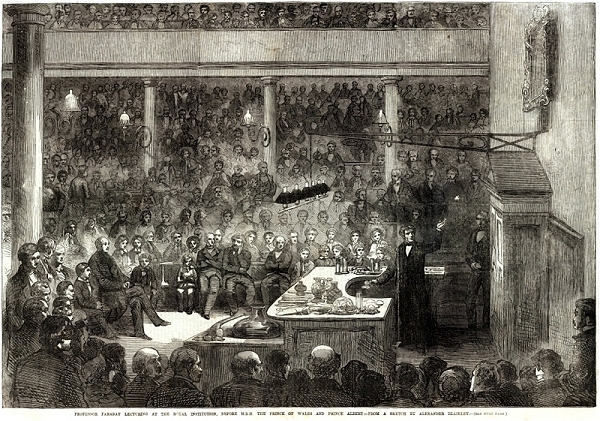
fig 10 - Professor Faraday lecturing at the Royal Institution
Of course Faraday could have acquired both manual dexterity and an understanding of materials if he had been an apprentice in any skilled trade, for example a blacksmith like his father, a cabinet maker, or a silversmith. The important thing is that he opened the books Riebau gave him to bind and started to read. And he never forgot his time with Riebau. After Faraday's death in 1867, one of his nieces, in her recollections of her distinguished uncle, remembered him catching sight of a newspaper boy in the street and saying, 'I always feel a tenderness for those boys, because I once carried newspapers myself' [fig 11].
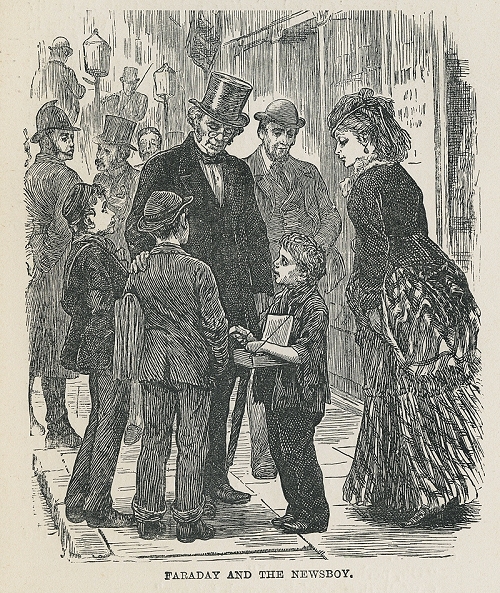
fig 11
The Death of a Good Master
On Saturday 28th November 1835 there was a small but eye-catching headline in the Morning News: 'AWFULLY SUDDEN DEATH'. The short paragraph below announced Riebau's end, describing the circumstances in some detail:
The deceased, who was about seventy-six years of age, and of remarkably sober and domestic habits, got up early in the morning as usual, and having at eight o'clock sat down with his wife and ate a hearty breakfast he went down stairs into the kitchen to wash his hands, and was returning up again, when, near the landing-place, he suddenly fell back upon his head and never spoke afterwards. Medical assistance was promptly resorted to, but the vital spark had fled. The deceased was respected by all who knew him. He generally enjoyed good health. The body awaits a Coroner's Inquest.
It is ironic that we know so much about the last hour of Riebau's life, but so little about what went before. The announcement fails to mention that he had fostered genius.
Postscript
It is still possible to discern the general outline of Riebau's shop in Blandford Street. These days it is divided into two, a café on the left and an estate agent on the right. The only indication of the building's history is a brown plaque, erected by the Society of Arts, on the wall above the shopfronts: 'MICHAEL FARADAY, MAN OF SCIENCE, APPRENTICE HERE' [fig 12].
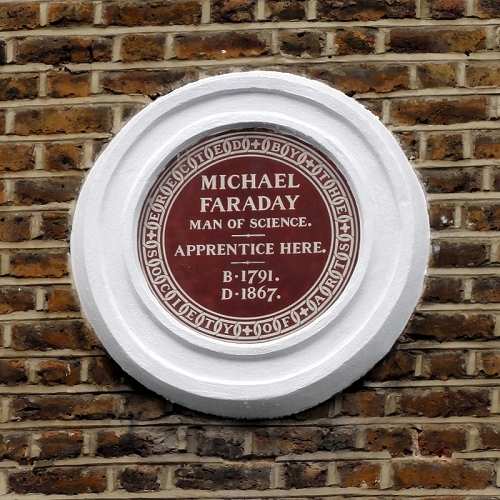
fig 12 - The plaque in Blandford Street.
Notes
- Tyndall (pp. 8 - 9) gives a lively first-person account of this episode.
- Premiums, when they were paid, appear to have been very variable. Howe and Child (p. 32) describe John Lovejoy, of Dean Street, taking on four apprentices between 1789 and 1797, three of whom paid premiums, of £3, £20, and £6.
- I sent this picture to Bernard Middleton who, in turn, kindly showed it to other expert binders. They could not confirm this notion, but did not rule out the possibility.
- This extract is from Benjamin Abbott: 'Jottings from Memory in reference to my dear and deceased friend M. Faraday', published in James 1992.
References
- Bence-Jones, H. The Life and Letters of Faraday. Longmans, Green, and Co. 1870.
- Cantor, G. Michael Faraday: Sandemanian and Scientist. Macmillan, 1991.
- Howe, E. and Child, J. The Society of London Bookbinders 1780-1951. Sylvan Press, 1952.
- James, F.A.J.L. (ed.) The Correspondence of Michael Faraday, Vol. 1, Vol. 6. The Institution of Engineering and Technology, 1991, 2012.
- James, F.A.J.L. 'The tales of Benjamin Abbott: a source for the early life of Michael Faraday' in The British Journal for the History of Science, Vol. 25, No. 2, 1992.
- James, F.A.J.L. Michael Faraday: A Very Short Introduction. Oxford, 2010.
- Middleton, B. C. A History of English Craft Bookbinding Technique. (4th edn.) Oak Knoll Press and The British Library, 1996.
- Tyndall, J. Faraday as a Discoverer. Longmans, Green, and Co., 1868.
Acknowledgements
Figures [2, 3, 4, 5] reproduced by courtesy of the Institution of Engineering and Technology Archives; Figure 6 © Bridgeman Images; Figures [7, 8, 9] reproduced by courtesy of the Royal Institution.
Personal thanks go to Professor Frank James at the Royal Institution for sharing with me some of his wide- and deep-ranging knowledge of Faraday and his times. I would also like to thank Jane Harrison, Documentation Manager at the Royal Institution, and Jonathan Cable, Archivist at The Institution of Engineering and Technology, for their help. Last, but not least, I am grateful to Bernard Middleton for taking a close look at the picture of Faraday's 'electrical machine'.
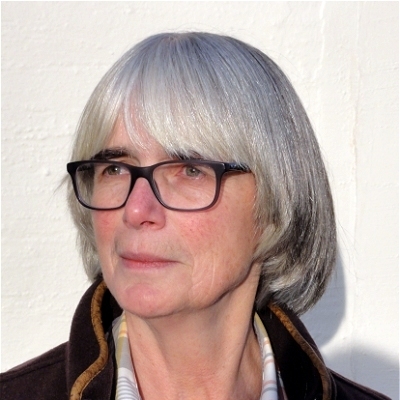
Anne Roberts worked for Oxford University Press for several years. Since retirement, she has combined her interests in bookbinding and letterpress printing, and was Editor of Bookbinder between 2013 and 2016. She is one of the many descendants of Michael Faraday's younger sister, Margaret.
